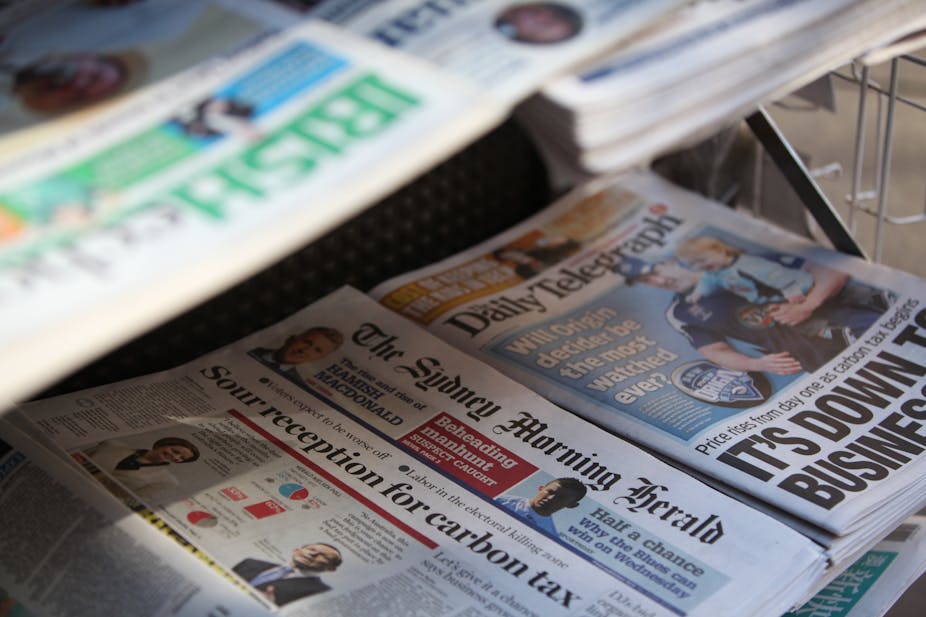Australian media, and in particular the print media, stands out internationally among advanced democracies for its extreme concentration.
Three owners – News Limited, Fairfax Media and APN News and Media – hold approximately 98% of the sector, and two of these owners, News and Fairfax, together hold about 88% of the print media assets in the country.
This places a ceiling on the number of the voices Australians can access in the form of original news. Even when performing optimally, the limit of these corporate voices is a constraint on the diversity of news and opinion.
A reasonable comparison can be drawn with the supermarket retailers, Coles and Woolworths, and their Australia-wide duopoly. There are relative adverse consequences of having a duopoly in our retail food sector compared with one in the news print media. Indeed, the possibility of the Australian population being sufficiently well informed to make many important everyday living and election time decisions, ratchets the media sector up a notch or two over grocery shopping.
Why does a diverse print media sector matter? Contrary to the misleading celebrations about internet abundance that we all too frequently hear nowadays in the (self-interested) media or claims by their politician fanclubs, there is clear evidence that print media (including online versions of the most popular news brands) remains the dominant source of news for the rest of the news media sector – both traditional (radio, television, magazines, subscription) and new media (online only news sites, and very popular aggregators like Google and Yahoo or portals like Ninemsn).
The most important news media for everyday living is the media that can usefully inform us about political, consumer and business choices at a very local level. Don’t fall for those superficially persuasive arguments about how we can now all have A-list opinion twitter feeds and read newspapers and blogs from all over the globe on your smartphone.
Sure, it’s possible, but the majority of people simply don’t approach media in this way. We use search engines or bookmarked web pages to find out more about story we’ve heard about in the workplace, through friends or family, hearing background media like talkback radio, or having it shared or liked on Facebook. We’re still watching free-to-air television and listening to commercial radio.
With the exception of Sydney and Melbourne, no other large Australian city has more than a single daily newspaper.
Which other major cities around the world can you think of that have such limited choice? I was recently researching news media diversity in Hong Kong, and was surprised to learn they have 50 daily, made from trees newspapers, for a population of only seven million.
These consist of 24 Chinese language and 16 English language (including one in Braille) papers, eight bi-lingual dailies and five Japanese dailies. Most have online versions.
Hong Kong might not be the perfect comparison, but the difference is instructive.
In more similar countries, the US, with a population of around 307 million has three corporations controlling 26% of the circulation of newspapers. The UK, with a population of 62 million has three corporations with 62% of the circulation.
For a medium-ranking democracy, Australia’s 98% print media circulation in the hands of three corporations puts it in a special category in the international media concentration league table.
With concentration data like this you can begin to see why Australia needs to be a regulatory trendsetter, and why comparing Senator Stephen Conroy to Stalin is clunky hyperbole from those with power in their hands.
Whether or not the proposed Public Interest Media Advocate is the best mechanism to safeguard existing media diversity, and most importantly news media diversity, is debatable. But even the most self-interested supporters of self-regulation should acknowledge that Australia is in need of all the regulatory help it can get, because our very limited news media diet is clearly not a very healthy one.

